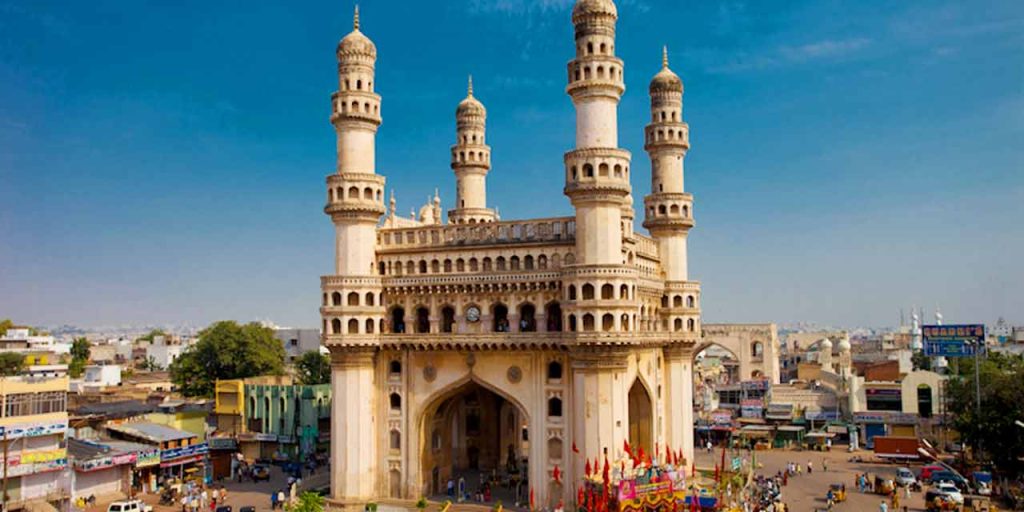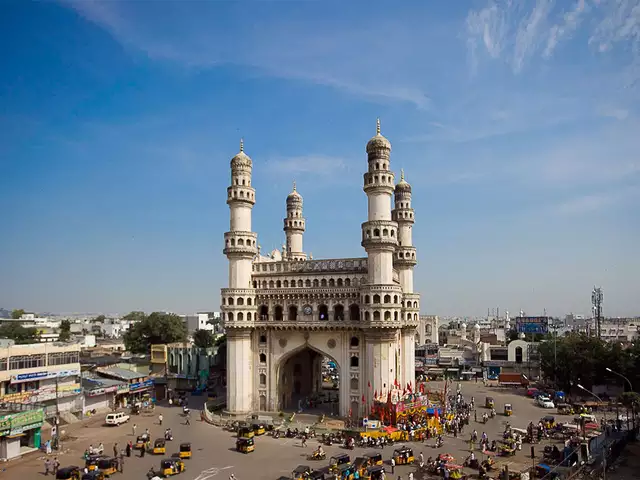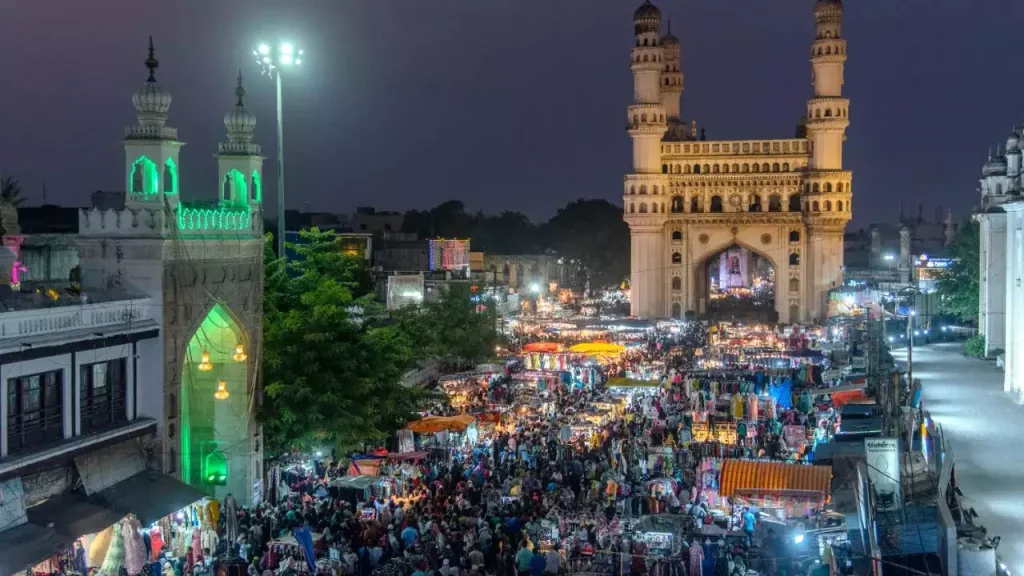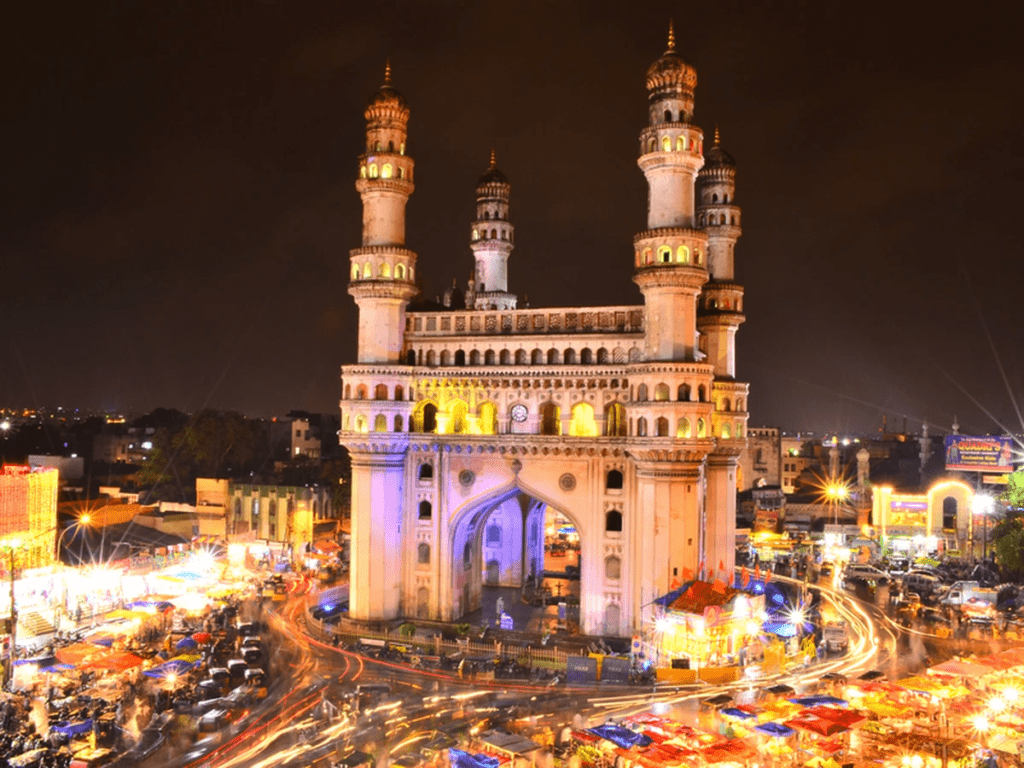The Charminar, constructed in 1591’s CE, is a monument and mosque located in Hyderabad, Telangana, India. The landmark has become a global icon of Hyderabad, listed among the most recognized structures of India. The Charminar is situated on the east bank of Musi river. To the west lies the Laad Bazaar, and to the southwest lies the richly ornamented granite Makkah Masjid. It is listed as an archaeological and architectural treasure on the official “List of Monuments” prepared by the Archaeological Survey of India. The English name is a translation and combination of the Urdu words Char and Minar or meenar, translating to “Four Towers”; the eponymous towers are ornate minarets attached and supported by four grand arches. Some of the popular myths that are recorded in accord with the monument’s architectural appearance are as follows. The Archaeological Survey of India (ASI), the current caretaker of the structure, mentions in its records that, “There are various theories regarding the purpose for which Charminar was constructed. However, it is widely accepted that charminar was built at the center of the city, to commemorate the eradication of plague”, a deadly disease which was wide spread at that time. as Muhammad Quli Qutb Shah had prayed for the end of a plague that was ravaging his city and vowed to build a Mosque at the very place where he prayed. According to Jean de Thévenot, a French traveller of the 17th century whose narration was complemented with the available Persian texts, the Charminar was constructed in the year 1591 CE, to commemorate the beginning of the second Islamic millennium year (1000 AH). The event was celebrated far and wide in the Islamic world, thus Qutb Shah founded the city of Hyderabad to celebrate the event and commemorate it with the construction of this building. Historian Masud Hussain Khan says that the construction of Charminar was completed in the year 1592, and that it is the city of Hyderabad which was actually founded in the year 1591. According to the book “Days of the Beloved”, Qutb shah constructed the Charminar in the year 1589, on the very spot where he first glimpsed his future queen Bhagmati, and after her conversion to Islam, Qutb Shah renamed the city as “Hyderabad”. Though the story was denied by the historians and scholars, it became popular folklore among the locals.
Gallery



